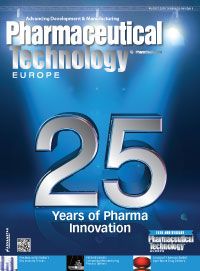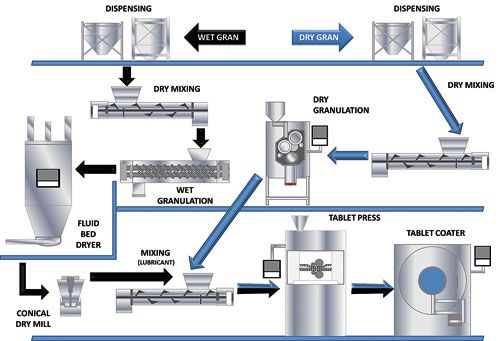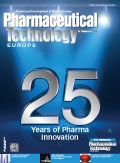Tableting—a Focus for Continuous Improvement
Pharmaceutical Technology Europe
Efforts to tackle challenges in tablet manufacture are shaped by quality by design (QbD) and continuous manufacturing.

Surveying the Landscape of Solid-Dosage Manufacturing
Experts take a look at the journey travelled thus far and where pharmaceutical manufacturing is heading over the next decade.
Current efforts to tackle the ongoing challenges in tablet manufacture are shaped by two features of the industrial landscape: quality by design (QbD) and continuous manufacturing. The quality of finished tablets is defined by critical quality attributes (CQAs) such as assay, weight, hardness and disintegration. However, ensuring these CQAs is made difficult by the number of steps involved in tablet production. Identifying analytical technologies that can be used to connect CQAs with the critical processing parameters (CPPs) for each individual step is a shared objective for the successful implementation of both QbD and continuous tablet manufacture.
Figure 1summarises the operations involved in continuous tablet manufacture, each of which has the potential to impact the CQAs of the tablet. This multi-step nature of tablet production means that there are many CPPs to assess and many process variables that directly affect the quality of the finished tablet. Indeed, estimates suggest the number of CPPs for a typical tableting process may be in excess of 100 (1).


Pharmaceutical Technology Europe25th Anniversary Issue
Successful implementation of QbD in this environment relies on being able to measure properties of the in-process material at the exit of, for example, a granulator, which directly correlate with the CQAs of the tablet. Doing so enables the discrete development of each individual step, to build an efficient process, whether batch or continuous. Relevant process analytical technology (PAT) is crucial if this objective is to be achieved.
This PAT toolbox is likely to include techniques such as near infrared and particle sizing, but there is also additional value in measuring certain bulk properties of tableting blends and granules. Especially crucial is flowability, which as recent research has revealed, shows a direct correlation between the basic flowability energy of the granules exiting a wet granulation step and the hardness of tablets produced from them (2). Results such as these demonstrate the need to embrace a range of analytical techniques, whether in-line or at-line, to efficiently investigate and optimise each step of the tableting process. Selecting the most relevant analytical tools for tableting is paramount if the objectives of QbD are to be realised to their full potential.
References
1. Inna Ben-Anat, “QbD implementation in Generic Industry: Overview and Case Study,” presentation at IFPAC (Baltimore, Maryland, Jan. 2013).
2. J. Clayton and J. Yin, Pharm Technol 38 (6) 44-49 (2014).

About the Author
Tim Freeman, Freeman Technology

Drug Solutions Podcast: A Closer Look at mRNA in Oncology and Vaccines
April 30th 2024In this episode fo the Drug Solutions Podcast, etherna’s vice-president of Technology and Innovation, Stefaan De Koker, discusses the merits and challenges of using mRNA as the foundation for therapeutics in oncology as well as for vaccines.
Pharmaceutical Tariffs Are Imminent: How Industry is Bracing for Impact
April 16th 2025On April 14, 2025, the Trump Administration launched a national security-driven investigation into pharmaceuticals, a move that will likely result in tariffs being placed on pharmaceutical drugs, ingredients, and other components that are imported from outside of the United States.